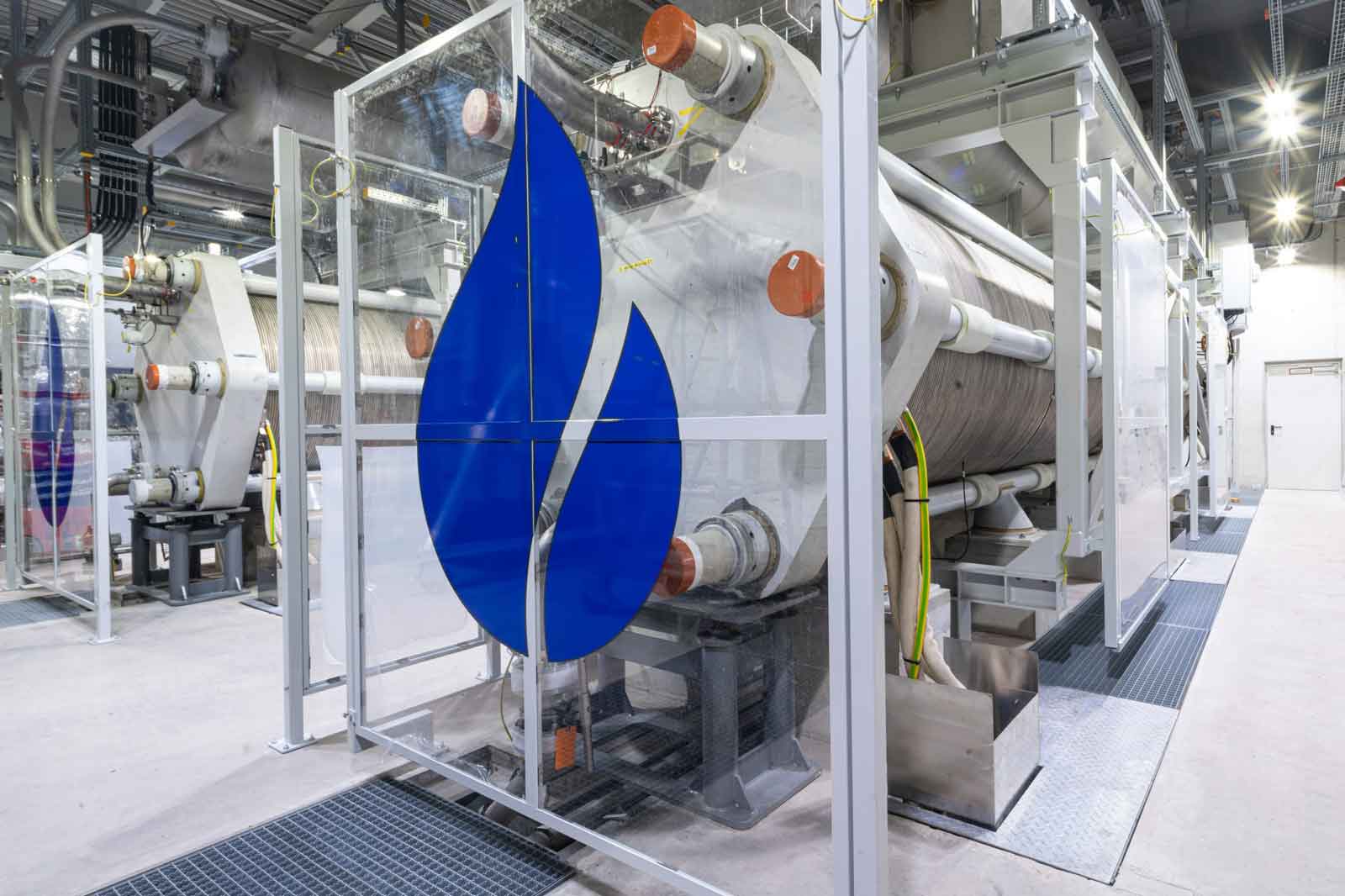RWE extends contract with CEO Markus Krebber until 2031
09.07.2025

It’s all systems go for hydrogen! Federal Minister for Economic Affairs and Climate Action Robert Habeck, Lower Saxony’s Minister President Stephan Weil as well as Lower Saxony’s Minister for the Environment, Energy and Climate Protection were present when RWE commissioned its pilot electrolyser plant in Lingen.
The facility on the site of RWE’s Emsland gas-fired power plant has a capacity of 14 megawatts (MW). It can generate up to 270 kilogrammes of green hydrogen per hour using electricity from renewable sources. Featuring two different electrolysis technologies, the pilot plant is to provide valuable insights for developing future industrial-scale hydrogen facilities. The first large commercial electrolyser plant is already being built only metres away. As part of the GET H2 Nukleus project, a 100-MW electrolyser is to be commissioned there by 2025, with its capacity to be expanded to 300 MW by 2027.
Markus Krebber, CEO of RWE AG: “Lingen is one of the most exciting locations of the German energy transition. In addition to operating our flexible gas-fired power plant and our state-of-the-art large-scale battery system, we are now also producing green hydrogen here. Over the coming years, we will expand our production capacities for green hydrogen at this site further to supply industrial consumers with green molecules and thus support them in their decarbonisation efforts. Together with our partner companies, our teams are pioneering these innovative technologies here. The hydrogen economy is extremely complex. With the core grid, an import strategy, domestic hydrogen production, and hydrogen storage facilities we have a target picture of the future. We can see a part of this vision becoming reality here and now.”
Robert Habeck, Federal Minister for Economic Affairs and Climate Action: “By supporting hydrogen along the entire value chain, we are taking an important step towards a climate-neutral and sustainable economy in Germany. The federal government and state governments are collaborating closely to create the right conditions for climate-neutral economic growth.
I am convinced that electrolysers like this one here in Lingen will make an important contribution towards a successful energy transition. The green hydrogen generated in the electrolysers here will be a key component for the decarbonisation of industry and the energy sector in Germany.”
Minister President Stephan Weil: “The pioneering work that is being done in Lingen is exemplary. Here, we see how industry can be decarbonised successfully in an impressive manner. The production of green hydrogen on an industrial scale supported financially by us as the state government here at RWE, is a key prerequisite for successfully transforming our energy supply and our industry towards becoming climate neutral. Within Germany, the state of Lower Saxony is leading the way in terms of investments in this technology. 50 per cent of Germany’s green hydrogen production as recently approved by the EU is to come from Lower Saxony. Lower Saxony is to become a hub for producing, importing, storing, transporting, and using hydrogen. We are thus on a good trajectory towards developing into Germany’s number-one hydrogen state. Now, it is important to grow the industrial demand for hydrogen further and create the best-possible conditions for utilising electricity from renewable sources in an even more targeted manner rather than having to curtail production in order to prevent congestion on the electricity grids.”
The Lower Saxony Ministry for the Environment, Energy and Climate Protection provided eight million euros in funding for the pilot electrolyser that has just been commissioned. The company has also been granted funding from the federal government and the state of Lower Saxony of over 490 million euros for constructing the 300-MW electrolyser as part of the GET H2 Nukleus project.
RWE uses the pilot plant to gain valuable insights into developing and operating industrial-scale systems
The pilot electrolyser consists of two sub-systems - an alkaline electrolyser from Sunfire with a capacity of 10 MW and a 4 MW plant, designed and built by Linde using a PEM electrolyser (PEM: proton exchange membrane) from ITM Power.
Initially, the hydrogen produced in the pilot plant is to be added to the fuel for the power plant’s unit D gas turbine as part of a comprehensive test programme at the site. From mid-2025, it will also be possible to fill hydrogen-powered vehicles with hydrogen from the pilot plant at the Emsland gas-fired power plant. The construction work for a hydrogen filling station and a trailer filling facility for hydrogen has already commenced.
Lingen as a starting point for the ramp-up of the hydrogen economy
Together with strong partners, RWE is part of the GET H2 initiative aimed at building the first hydrogen infrastructure in Germany that is accessible to the public. The GET H2 Nukleus project connects the production facilities for green hydrogen in Lingen to industrial consumers in Lower Saxony and North Rhine-Westphalia. The grid, spanning 130 km from Lingen to Gelsenkirchen, is to become the first hydrogen grid in the regulated sector with transparent prices and providing non-discriminatory access. In this way, the initiative wants to contribute towards significantly accelerating the ramp-up of the hydrogen economy and help companies in the industrial and mobility sectors to reach their climate targets.
You can find an overview of the most important hydrogen projects at the Lingen site at www.rwe.com/en/the-group/countries-and-locations/lingen/
Images of the pilot electrolyser plant for media use are available from the RWE Media Centre (image copyrights: RWE)